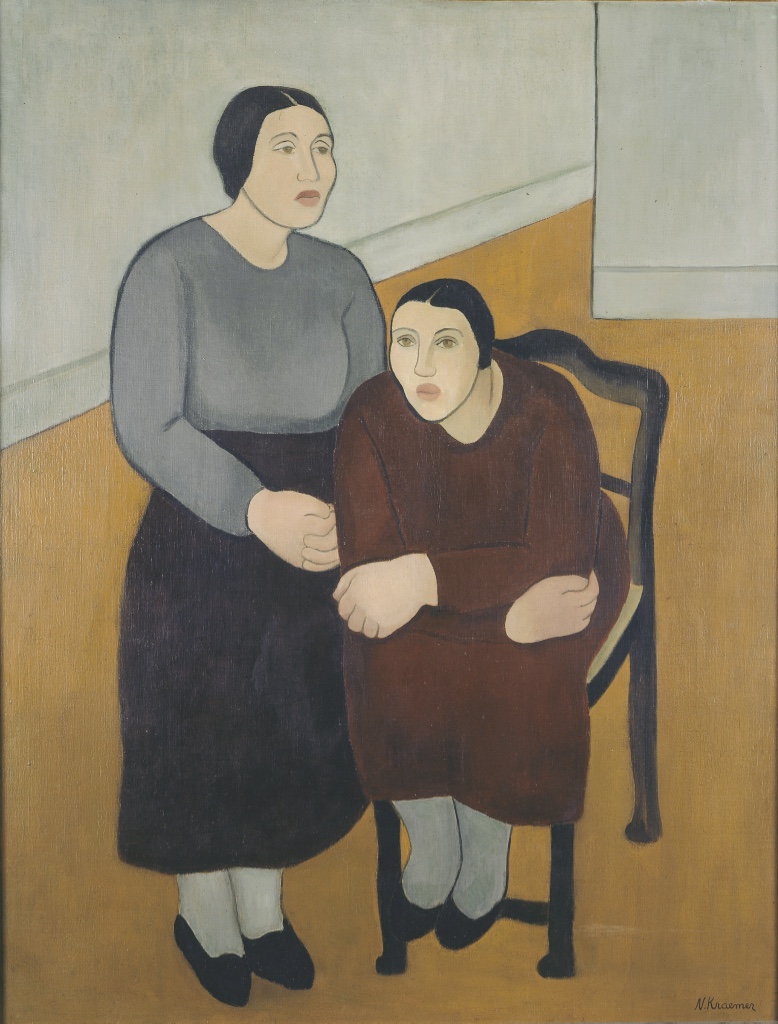Chana Gitla KOWALSKA
January 3, 2019Roman KRAMSZTYK
January 3, 2019Nathalie KRAEMER
PARIS 1891 – DEPORTED TO AUSCHWITZ 1943
Nathalie Kraemer was born in Paris on April 28, 1891 to Nathalie Armance Frissonnet, originally from Champagne, and Isidore Kraemer from Strasbourg in Alsace Lorraine. Her father was an Israelite, and her mother was not Jewish and did not convert, no one from her father's family was present at her wedding. The Family lived at 7 rue Magenta in the 10th arrondissement. Natalie’s father was an antique dealer like his brother Lucien in Paris. In 1875 He owned an impressive and lucrative antique business selling "Tapestry, Antique Furniture, Curiosities and Paintings". Tragically, Nathalie's father died at the age of 31, an only child. Nathalie Kraemer grew up in Paris and rom a young age, she took an interest in art and poetry, and later on winning a literary prize in 1927 for a collection of poems entitled “Rising Voices”.
In 1913, Nathalie Kraemer married a Jewish man named Nathan Marcel Levy. She moved to the city of Vichy, in central France, and lives with the Lévy family at 2 bis rue Couturier. In 1905, Marcel's father, Paul, opened a furniture store in Vichy, Place de la Poste, with his two sons. She devoted most of her time to painting, and is particularly productive between 1936 and 1938. In May 1940, Nathalie Kraemer exhibited her work for the last time, in the exhibition of the Society of Independent Artists at the Palais de Chaillot on the esplanade of Trocadero. A month later, while France was occupied (June 1940), Kraemer is forbidden to exhibit and sell his works. During the war, Nathalie Kraemer hid but continued to paint. In 1943 she was arrested and transported to Auschwitz. Mr. Granziani, a collector, saved some of her paintings. Today, her paintings are at Haifa University (Oscar Guez Collection) in Israel and at the Petit Palais Museum in Geneva.
Stories of Jewish Artists of the School of Paris 1905-1939
FRENCH-ENGLISH
Capitale des arts, le Paris des années 1905-1939 attire les artistes du monde entier. De cette période de foisonnement, un terme est resté, celui d'Ecole de Paris, qui recouvre une grande diversité d'expression artistique. Dans ce brassage dont Montparnasse est le creuset, un groupe se distingue : celui des artistes juifs venus de Russie, de Pologne et d'Europe centrale. Si leurs styles sont variés, un destin commun les rassemble : ils fuient l'antisémitisme de leur pays d'origine. Certains ont connu la célébrité dès les années 1920, tels Soutine, Lipchitz ou Chagall. D'autres n'ont pas eu le temps ou la chance d'y accéder. Près de la moitié a péri dans les camps de concentration nazis.
From 1905 to 1939, Paris attracted artists from all over the globe as the capital of the art world. This period of artistic proliferation became known as the School of Paris, and includes a great diversity of artistic expression. Within the teeming art world centred on Montparnasse, one group set itself apart: Jewish artists from Russia, Poland, and Central Europe. Although their styles were diverse, they shared the common fate of fleeing anti-Semitic persecutions in their home countries. Some became famous in the 1920s, such as Soutine, Lipchitz, and Chagall, while others did not have the time or the luck to gain renown. Nearly half of these artists died in Nazi concentration camps.





